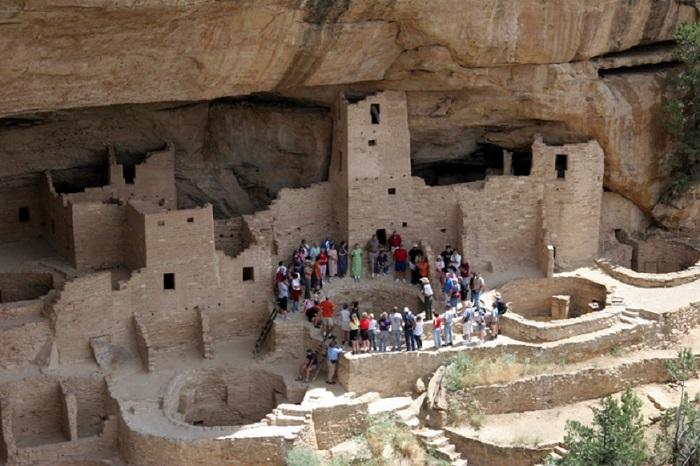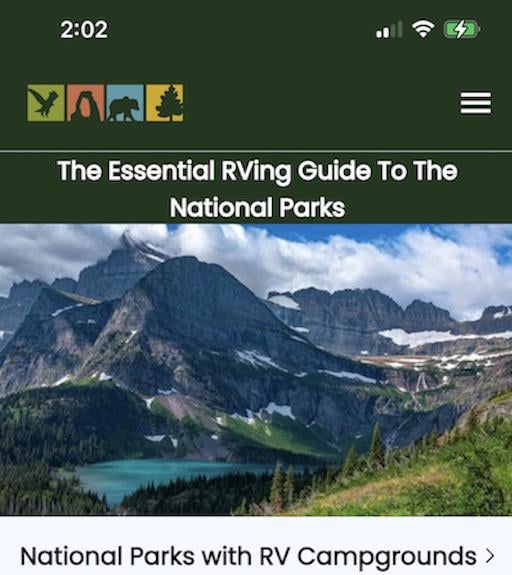
New policy will guide the National Park Service in the stewardship of natural and cultural resources at places like Mesa Verde National Park/NPS
A policy enacted last week updates the National Park Service’s guidelines for stewardship and reaffirms the agency’s “predominant” duty to protect natural and cultural resources.
Director’s Order 100, signed December 20 by Park Service Director Jonathan Jarvis, provides internal guidance for making decisions about how parks are managed. Three criteria – best available science, adherence to the law, and long-term public interest – will drive a bureau-wide shift toward interdisciplinary collaboration, increased scientific literacy, and more training.
“Our overarching goal of resource stewardship is to manage the resources under our care in an environment that is undergoing continuous change that is not yet fully understood,” Director Jarvis said in a release. “With this guidance, NPS employees will be better able to protect the extraordinary resources of the National Park System, provide visitors with transformative experiences, and ensure parks are a core of a national conservation land- and seascape.”
In particular, the order adopts two policies: the precautionary principle and adaptive management. The precautionary principle requires Park Service managers to err on the side of caution to prevent resource impairment when there is uncertainty about a decision’s impact. Adaptive management encourages adjustments to these decisions as outcomes become clearer through monitoring and better scientific understanding.
“Our staff and our visitors see ecological change in the parks every day – rapidly shrinking glaciers, plant communities in competition with non-native species, and wildlife contending with land use and habitat changes that challenge their traditional movement and migration pathways,” Director Jarvis said.
Director’s Order 100 in part updates the 1963 Leopold Report and implements recommendations from the 2012’s Revisiting Leopold: Resource Stewardship in the National Parks. It takes into account social, cultural, and demographic changes, such as increased visitation, climate change, invasive species, pollution, and new disciplines of science that have helped expand the understanding of natural and cultural systems.
While the order serves as internal guidance, park and resource management affects visitors, park partners, concession providers, and other stakeholders.
“We heard from some recreationists and concession providers worried that this policy will restrict visitor enjoyment of parks, and we heard from some environmentalists that it doesn’t do enough to protect natural and cultural resources and the values for which these parks were created,” Director Jarvis said. “I think this is the right policy to help us to meet our mission to protect and preserve parks while providing for their enjoyment today and for generations to come.”
Director’s Order 100 also calls on the agency to:
- Enhance and diversify its workforce
- Require scientific literacy of superintendents and those seeking leadership positions
- Provide resource stewardship training to its employees
- Integrate stewardship goals in its management documents
The comprehensive information and operational details to assist employees in implementing Director’s Order 100 will be developed by NPS subject matter experts in the months ahead.



Comments
More than likely it was the other "anonymous" coward, beachdump. He's the only one that repeats that mantra, ad nauseum.
Hey now! _Sometimes_ anonymous is a posting/login snafu of a registered user.
I'd like to turn this thread into something useful to me (and to new park employees). Harry, what books would be on your list? Rather than give my 5, I'll just nominate one:
Sellars 1997: Preserving Nature in the National Parks: a History. {As a bonus, NPS already either owns the copyright or licenses it, because it is available in the NPS eLibrary, albeit in a PitB format of ~2 pages of text per web page.}
I also agree on park-specific histories (and natural histories). The park administrative histories I've read have been dry and didn't connect the dots with why. Can folks post to point out useful informative resources for individual parks they are familiar with?
Either Kurt or I could compile a list of recommended background references.
________________________________
Separate from background histories, my big ask in terms of DO-100 is for NPS scientists to have access to scientific journals. A lot more is known now about how nature works than was when we were in graduate school decades ago, and fields like wildlife statistics are completely different. "Best available science" includes advances from recent decades, and that requires access to the scientific literature.
As recently as 2008 NPS had access to roughly half of the electronic journals USGS has access to, then NPS dropped ScienceDirect and other publishers. At GWS in 2011, Gary Machlis promised we'd have access again by the 4th of July if not Memorial Day. That didn't happen; the situation has gotten worse. Since the ESA journals moved from Allen Press to Wiley last year, we've lost access to 4 major ecological journals. NPS has a smaller subset of JSTOR journals than before, each with moving walls blocking the most recent 3-5 years. The DOI electronic library is pretty worthless, primarily EBSCO links to abstracts but not full text. Google scholar has more linked full-text articles as well as a more powerful search interface.
ps: I'm pretty sure that David Hallac was Chief of NR at Yellowstone before moving to CAHA.
This order was rescinded on August 16, 2017.
https://www.nps.gov/applications/npspolicy/DOrders.cfm